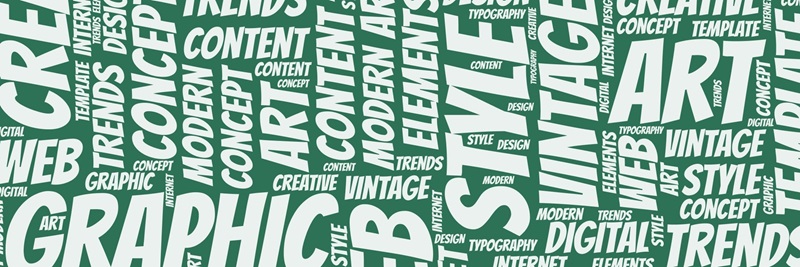Why Words Hold Weight: Design Aesthetics Through Adjectives

A common challenge for visual designers is identifying and expressing the personality a particular design should convey. For many, focusing purely on “look and feel” will fail to accomplish a major goal of visual design: communication. Something can be aesthetically pleasing while completely miscommunicating a brand’s message. For example, a healthcare organization’s website could look modern and engaging, but its visuals could feel more like an innovation-led brand than the patient-centric one the organization wants to convey.
For designers, creating visuals is only part of the equation. Intentional verbal communication and design expression are often an afterthought. Whether you’re trying to understand a brand’s visual expression, showcasing design, or receiving feedback, it’s important to have the vocabulary to communicate effectively. It is also important to ask, “What exactly, is the message you’re trying to convey—visually?”
If you’re working with an organization that doesn’t have established brand guidelines, expressing its personality through design is a little bit trickier. However, if you have a good process in place, and reserve a seat for designers early in a website redesign’s discovery process, that makes all the difference.
At Velir, our discovery process places designers alongside experience strategists and brand stakeholders. Being embedded at the start helps us craft a clear vision together, through pivotal conversations and decision points. Also, we collaborate with copywriters to gain insight into brand language and vocabulary preferences, which helps us better express the brand’s personality and messaging through visuals. Our collaboration involves integrating the results of brand voice and brand vocabulary workshops conducted by our copywriters into our design inputs. Learning the exact words, the client uses to describe their brand is immensely helpful in developing design concepts that communicate the brand’s essence effectively.
While exploring design concepts, we carefully consider words. We’re always mindful of messaging and make sure that it communicates the central vision laid out in our strategy. As you’re reading, you may be wondering, “Well this is all good and all, but how do you bring clients into the process?” We’ll tell you.
For starters, we ask stakeholders, “What is it that you want to communicate, and how should it look and feel?” While this prompt is fairy helpful, especially with savvy clients, not all stakeholders have the same design exposure to answer the question. We also ask clients to share examples of design or digital experiences that they feel is appropriate to the brand. Having a conversation is always a great starting point, but it’s the conversation itself that matters.
While conversing with clients, record your call, or have a designated scribe take down words, expressions, or adjectives that materialize. These words are gold, and just like them—they hold weight. Hang on to them throughout the design process and they’ll be worth their weight.
Words matter! They do, and even more so when delivered against a piece of design. Design can be very subjective and so can words, so having a thoughtful and constructive discussion to get to the essence of what they communicate can make or break a design concept.
When working with words, adjectives are interpreted in many ways. We associate so many experiences and feelings with them. What we’ve found helpful is to pair descriptive words along a scale. Say, “Should we focus on formal or informal?” Giving stakeholders a clear choice helps them focus on a feeling they want to convey and clarifies feelings they do not want to project. It’s important to decide on these word pairs carefully, making sure that both words are neutral on either end of the scale.
Consider this. Clients will often say they want a “professional-looking” website. But we would never consider pairing “professional” with “unprofessional.” It’s important to draw out the main essence of the word “professional,” do they mean “formal?” If so, the working scale may be in the form of “Informal to Formal.” There is nothing particularly negative about an informal or formal-looking website. Here are some word pairings that we use in our client workshops to help get you started.
Now that we’ve clarified our process of using word choices to inform design, hopefully, we’ve painted a more complete picture of how they can inform the visual personality of a new website. If our strategy is to create a more engaging experience and the current website is “cold, classic, and orderly,” perhaps the new experience should embody “warmth, modernity, and spontaneity.” Use these words to defend your design choices, and to drive your visual strategy forward.
Looking for help developing or refining your brand’s design aesthetic? Contact us.




